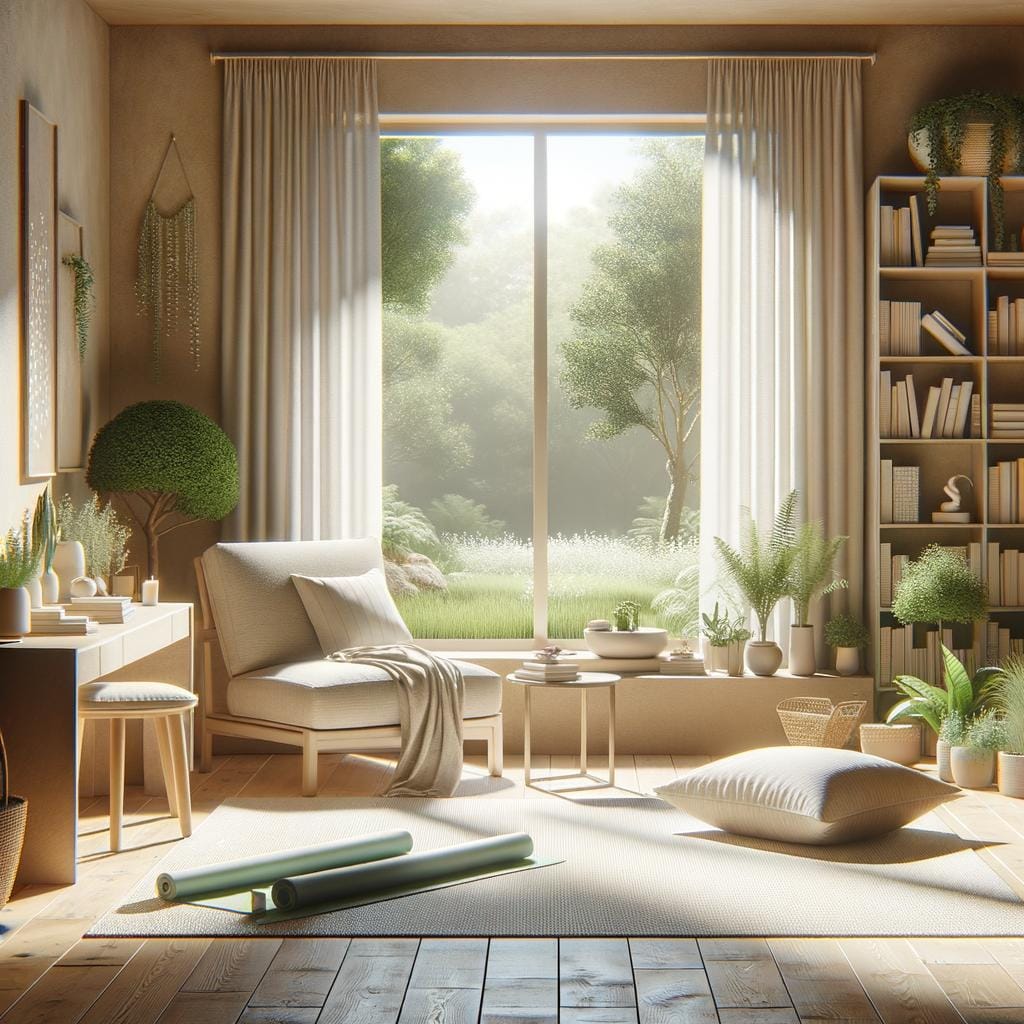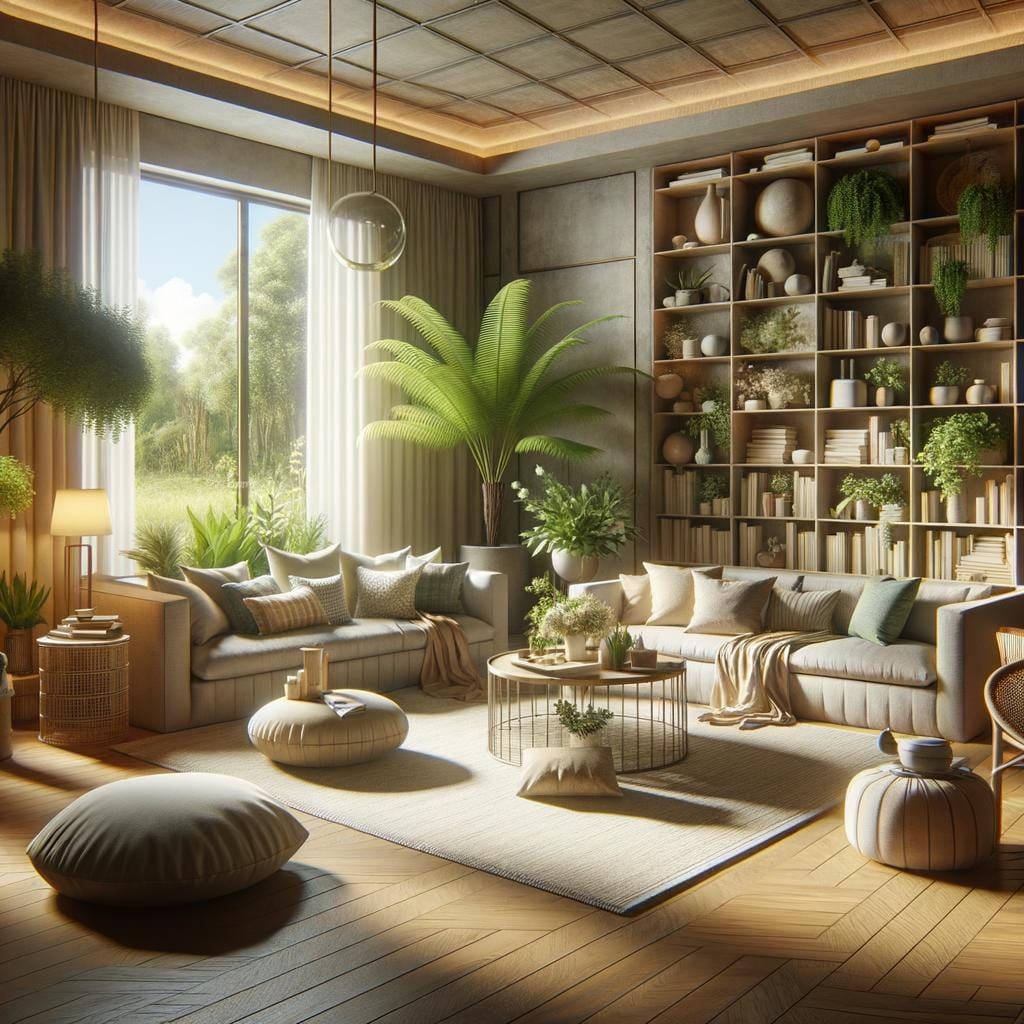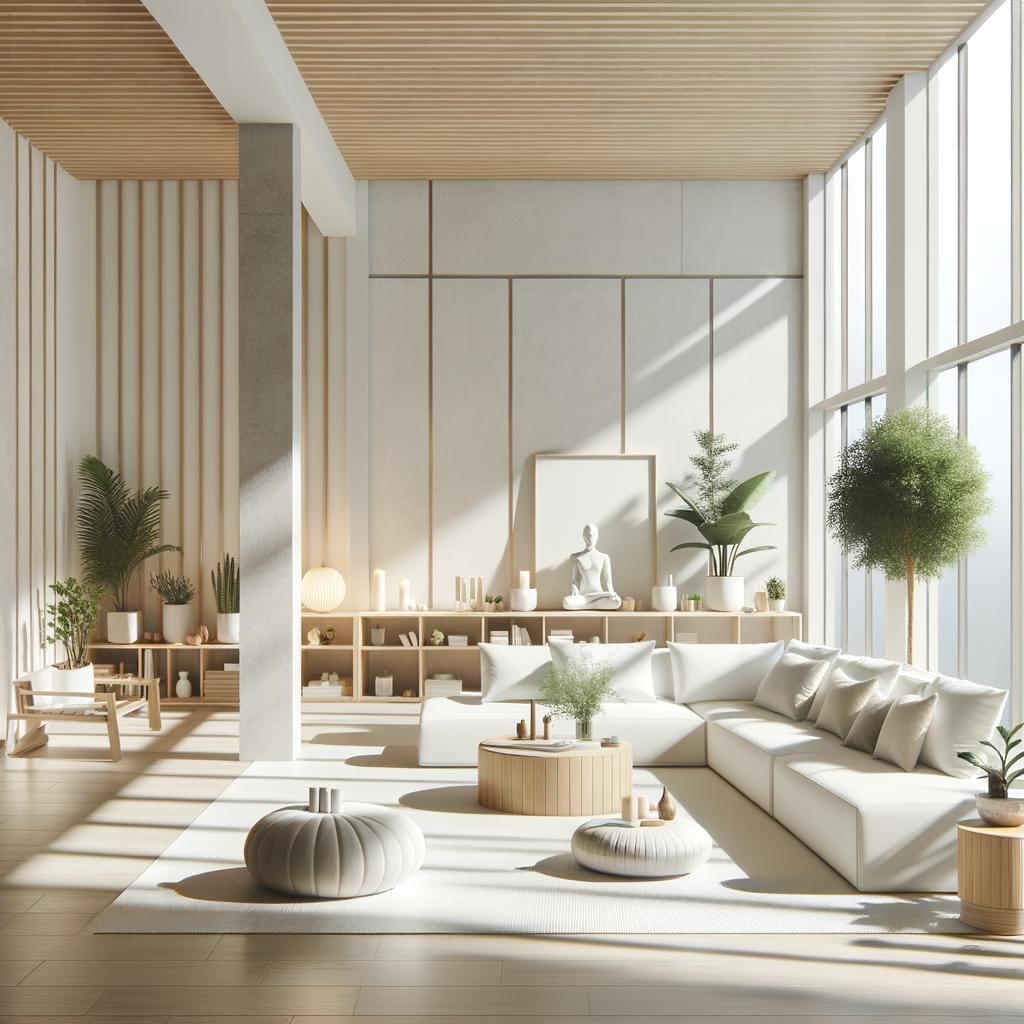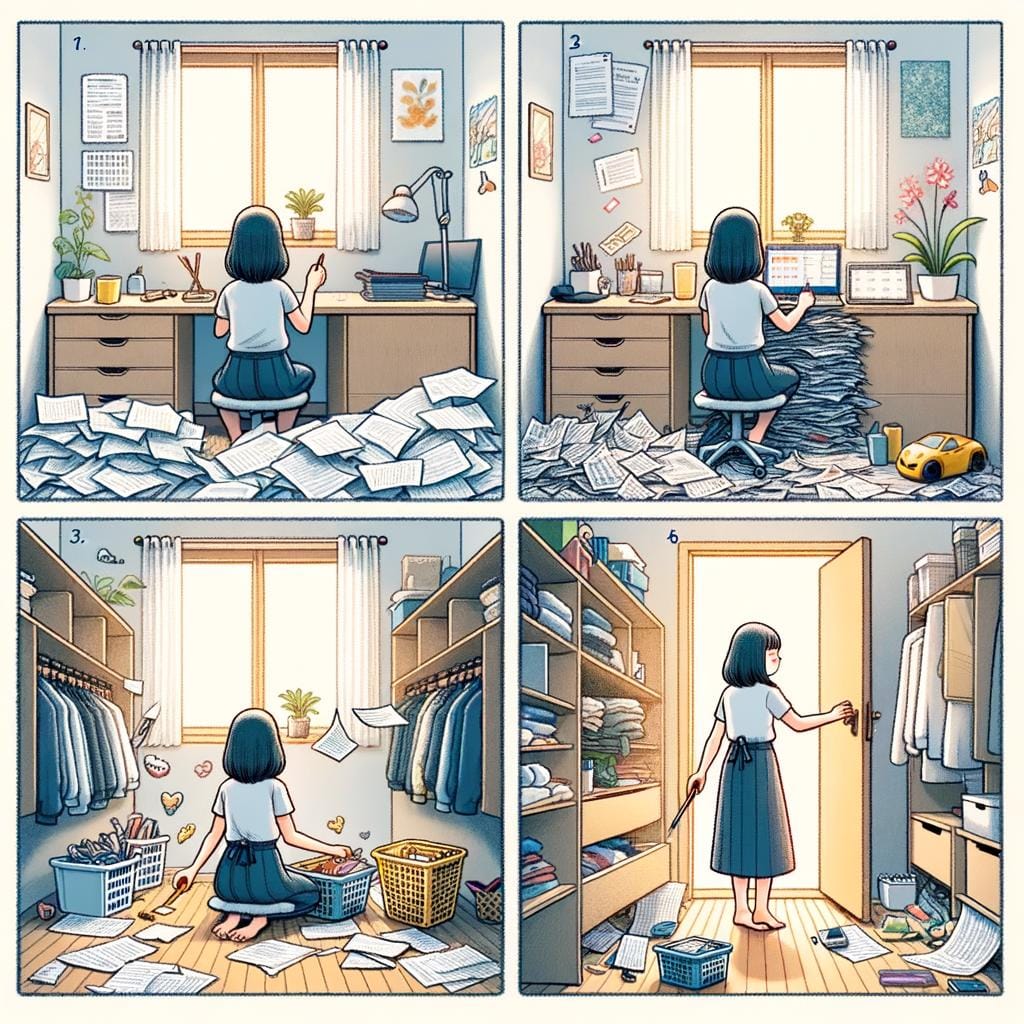In today’s fast-paced world, stress has become a common and sometimes overwhelming part of our daily lives. However, creating stress-free living environments is essential for our mental and physical well-being. By designing spaces that promote relaxation and tranquility, we can effectively combat the negative effects of stress and cultivate a sense of peace within our homes.
One key aspect of achieving a stress-free living environment is through creating a peaceful sanctuary in your home. This can be done by incorporating elements like calming colors, natural light, and decluttered spaces. By designing your home with relaxation in mind, you can create a space where you can unwind and recharge after a hectic day.
Additionally, embracing nature indoors can have a significant impact on promoting serenity within your living space. Incorporating plants and natural elements not only adds aesthetic value but also contributes to improving air quality and reducing stress levels. By bringing the outdoors inside, you can create a soothing atmosphere that enhances your overall well-being.
Creating a Peaceful Sanctuary
Creating a tranquil and stress-free living environment is essential for promoting overall wellbeing and mental health. Designing your home as a peaceful sanctuary can significantly impact your daily life, making it easier to unwind, relax, and rejuvenate after a long day. By incorporating certain elements and following key tips, you can transform your living space into a haven of calmness and serenity.
Comfort Is Key
When designing your home for optimal relaxation, prioritize comfort in every aspect. Choose furniture pieces that are not only aesthetically pleasing but also cozy and inviting. Soft textures, plush cushions, and ergonomic designs can make a significant difference in how peaceful you feel in your space. Consider creating designated relaxation zones where you can unwind with ease, such as a reading nook with a comfortable armchair or a cozy meditation corner with floor cushions.
Personalization and Minimalism
Personalize your living environment by incorporating items that bring you joy and comfort, while also embracing minimalism to reduce clutter and create visual calmness. Display meaningful decorations, artwork, or photographs that evoke positive emotions and memories. Simplify your space by decluttering unnecessary items and organizing belongings effectively. A clutter-free environment promotes mental clarity and reduces feelings of anxiety or stress.
Natural Elements for Serenity
Bring the outdoors inside by incorporating natural elements like plants, stones, wood accents, or water features into your home decor. Adding greenery not only enhances the aesthetic appeal of your space but also improves air quality and promotes a sense of tranquility.
Natural materials like bamboo or rattan furniture can create a harmonious ambiance while connecting you with the calming effects of nature. By integrating these elements into your home design, you can achieve a more peaceful and stress-free living environment that supports overall wellness.
Decluttering Your Space
In today’s fast-paced world, creating a stress-free living environment is essential for maintaining our mental wellbeing. One crucial aspect of achieving this is through decluttering our space. The impact of organization on mental health cannot be overstated. A cluttered and chaotic environment can lead to feelings of overwhelm, anxiety, and even contribute to a lack of focus. On the other hand, a well-organized space can promote a sense of calm, clarity, and overall contentment.
Decluttering your space goes beyond just tidying up; it involves purging unnecessary items, reorganizing belongings, and creating an efficient system to maintain order. By removing clutter from our surroundings, we also clear our minds and allow ourselves to think more clearly. This process can be incredibly liberating and empowering as we let go of physical items that no longer serve us or bring us joy.
Moreover, decluttering your home can have a significant impact on reducing stress levels. Studies have shown that individuals who live in cluttered environments are more likely to experience elevated levels of cortisol, the stress hormone.
By creating an organized and clutter-free space, we create a soothing atmosphere that supports relaxation and peace of mind. In essence, decluttering is not just about cleaning up; it’s about creating a sanctuary where we can unwind and rejuvenate in our stress-free living environments.
Embracing Nature Indoors
Bringing the outdoors inside can significantly contribute to creating a stress-free living environment. Plants not only add a touch of greenery but also have been proven to reduce stress, improve air quality, and enhance overall well-being. Different types of plants such as snake plants, peace lilies, and succulents are known for their air-purifying properties and calming effects. By strategically placing these plants around your home, you can create a peaceful sanctuary that promotes relaxation.
In addition to plants, incorporating natural elements in your home decor can further enhance the serenity of your space. Materials like wood, stone, bamboo, or even water features can evoke a sense of calmness and connection to nature.
Whether it’s adding wooden furniture, incorporating stone accents, or introducing a small indoor fountain, these natural elements can help you bring the tranquil essence of the outdoors into your interior design. Creating a harmonious balance between these elements can transform your living environment into a soothing retreat from the stresses of everyday life.
Research has shown that exposure to nature and natural elements has positive effects on mental health and emotional well-being. Besides improving mood and reducing anxiety levels, incorporating plants and natural elements in your living space can boost productivity and creativity.
So if you’re looking to cultivate a more serene atmosphere at home, consider embracing nature indoors by integrating plants and natural materials into your decor. This simple yet effective approach can foster a sense of tranquility and elevate your overall quality of life in your home.
| Benefits of Nature Indoors | Impact on Wellbeing |
|---|---|
| Reduced stress | Increased relaxation |
| Improved air quality | Enhanced mental health |
| Promotes creativity | Boosts mood |
Colors That Calm
When it comes to creating a stress-free living environment, choosing the right colors for your space can play a significant role. Colors have the power to evoke certain emotions and feelings, so selecting a calming color palette is essential for promoting relaxation in your home. Here are some tips on how to choose colors that calm and create a soothing atmosphere:
- Soft Pastels: Opt for soft pastel shades like light blues, greens, and lavenders to create a sense of tranquility in your space. These hues are known for their calming properties and can help reduce stress levels.
- Neutral Tones: Neutral colors such as beige, ivory, and taupe can also promote relaxation and create a sense of balance in your home. These versatile shades provide a serene backdrop for any room.
- Nature-Inspired Hues: Incorporating nature-inspired colors like earthy greens, warm browns, and soft yellows can bring the outside in and evoke feelings of peace and harmony. These tones are perfect for creating a peaceful sanctuary in your home.
In addition to choosing the right colors for your walls and decor, consider the impact of color temperature on creating a calming atmosphere. Cool colors like blues and greens are known to have a calming effect, while warm colors like reds and oranges can be energizing. Finding the right balance of colors in your space is key to promoting relaxation and reducing stress.
When decorating with calming colors, remember that less is often more. Avoid overwhelming your space with too many vibrant hues or busy patterns, as this can have the opposite effect of creating a peaceful environment. Instead, focus on incorporating subtle pops of color through accent pieces like throw pillows, artwork, or plants. By carefully selecting a harmonious color palette for your home, you can create a serene atmosphere that promotes relaxation and overall wellbeing.
Lighting for Tranquility
Natural light plays a crucial role in creating a stress-free living environment. It not only brightens up your space but also has numerous benefits for your mental and emotional well-being. Here are some tips on how to optimize lighting for tranquility in your home:
- Maximize natural light: Position furniture and decor items strategically to allow sunlight to flow into your living spaces.
- Use soft, warm lighting: Opt for lamps and fixtures that emit a soft, warm glow rather than harsh, bright lights to create a cozy and inviting atmosphere.
- Dimmer switches: Install dimmer switches in key areas of your home so you can adjust the brightness according to the time of day or your mood.
In addition to natural light, artificial lighting also plays a significant role in setting the tone for relaxation at home. Here are some ideas on how to use different types of artificial lighting for tranquility:
- Task lighting: Use focused task lighting in work areas or reading nooks to reduce eye strain and create a sense of productivity.
- Ambient lighting: Install overhead ambient lighting fixtures that provide overall illumination without creating harsh shadows.
- Candlelight: Light candles in the evening to promote a calming ambiance and help you unwind after a long day.
By paying attention to the role of light in your living environment, you can transform your space into a peaceful sanctuary that promotes relaxation and well-being. Whether it’s maximizing natural light or choosing the right artificial lighting fixtures, incorporating these elements will help you create an atmosphere conducive to reducing stress and enhancing tranquility in your home.
Mindful Living
In today’s fast-paced world, it is crucial to incorporate mindfulness and meditation practices into our daily routines to promote stress-free living environments. Mindfulness involves being present in the moment, acknowledging your thoughts and feelings without judgment, while meditation focuses on calming the mind and body through various techniques. By incorporating these practices into your day-to-day life, you can create a more serene and peaceful home environment.
One way to start practicing mindfulness is by setting aside a few minutes each day for meditation. Find a quiet space in your home where you can sit comfortably without distractions. Close your eyes, focus on your breath, and let go of any racing thoughts. This practice can help reduce stress levels, improve focus, and promote overall well-being. Consider using guided meditation apps or online videos if you’re new to the practice.
In addition to formal meditation sessions, you can also incorporate mindfulness into everyday activities such as cooking, cleaning, or even just taking a walk outside. Paying attention to your senses, thoughts, and emotions during these moments can help cultivate a sense of awareness and presence throughout your day. By embracing mindful living practices, you can transform your home into a sanctuary of peace and tranquility.
| Benefit | Example |
|---|---|
| Reduce Stress Levels | By practicing mindful breathing techniques daily. |
| Improve Focus | By incorporating mindfulness into everyday activities like reading. |
| Promote Overall Well-being | Through regular meditation practices that calm the mind. |
Technology Detox
In today’s digital age, where technology is indispensable in our everyday lives, it can be challenging to detach ourselves from screens and create a stress-free living environment. However, it is essential to find a balance and incorporate a technology detox routine to promote a peaceful home. By reducing screen time and unplugging from devices, we can improve our mental wellbeing and overall quality of life.
Setting Boundaries With Technology
One effective way to reduce screen time is by setting boundaries with technology usage. Establishing specific times of the day when screens are off-limits can help create a more mindful and present living environment. Designate areas in your home as tech-free zones, such as the bedroom or dining area, to encourage face-to-face interactions and relaxation without distractions from devices.
Engaging in Tech-Free Activities
Instead of turning to screens for entertainment or relaxation, consider engaging in tech-free activities that promote mindfulness and creativity. Reading a book, practicing yoga, going for a walk in nature, or indulging in a hobby are great ways to unwind and detach from the constant stimulation of electronic devices. These activities not only reduce stress but also improve focus and mental clarity.
Fostering Connection Without Technology
Technology often serves as a barrier to genuine human connection, leading to feelings of isolation and disconnection. To foster relationships and create a more peaceful home environment, prioritize face-to-face interactions with loved ones. Plan family game nights, cook together, or simply have meaningful conversations without the distraction of screens. Building strong relationships based on real connections can significantly contribute to a stress-free living environment free from the negative impacts of excessive technology usage.
Finding Peace in the Chaos
In the hustle and bustle of today’s fast-paced world, finding peace within chaos can seem like an impossible task. However, it is essential to prioritize our mental wellbeing by creating stress-free living environments that promote relaxation and tranquility. By incorporating simple yet effective strategies into our daily routine, we can navigate through hectic environments with a sense of calm and clarity.
One key aspect of creating a stress-free living environment is designing your home in a way that fosters relaxation. By decluttering your space and embracing organization, you can greatly impact your mental wellbeing. Studies have shown that a tidy environment can help reduce feelings of anxiety and overwhelm, creating a peaceful sanctuary where you can unwind and recharge after a busy day.
In addition to decluttering and organizing your space, incorporating elements of nature indoors can also contribute to a stress-free living environment. By adding plants, natural materials, and greenery to your home, you can bring the calming effects of the outdoors inside.
Nature has a profound impact on our mood and overall sense of wellbeing, making it an essential component in creating a tranquil atmosphere at home. Making small changes like these can significantly improve the quality of your everyday life and pave the way for a more peaceful existence amidst chaos.
Frequently Asked Questions
How Can You Live a Stress-Free Life?
Living a stress-free life involves finding ways to manage and cope with stressors effectively. This can include practicing mindfulness, setting boundaries, engaging in regular exercise, getting enough sleep, and seeking support from friends or professionals when needed.
What Environment Reduces Stress?
An environment that reduces stress is typically one that is organized, clean, and clutter-free. Natural elements such as plants or natural light can also contribute to a calming atmosphere. Additionally, having a supportive social network and positive relationships can help alleviate stress.
How Do We Create a Stress-Free Environment?
Creating a stress-free environment requires intentionally designing your surroundings to promote relaxation and well-being. This can involve decluttering your space, incorporating calming colors like blue or green, using aromatherapy or soothing music, establishing clear boundaries in your personal and work life, and prioritizing self-care activities such as meditation or exercise.
By cultivating a peaceful environment, you can better manage stress and improve your overall quality of life.

Hello, I’m April Denton, your go-to expert for all things home decluttering and organization. With over a decade of experience helping individuals transform their living spaces into serene, clutter-free sanctuaries, I am passionate about the life-changing benefits of decluttering. My journey into the world of organization began out of necessity, juggling a busy career and a bustling household. I quickly realized that a well-organized home was the key to a more balanced, stress-free life.





